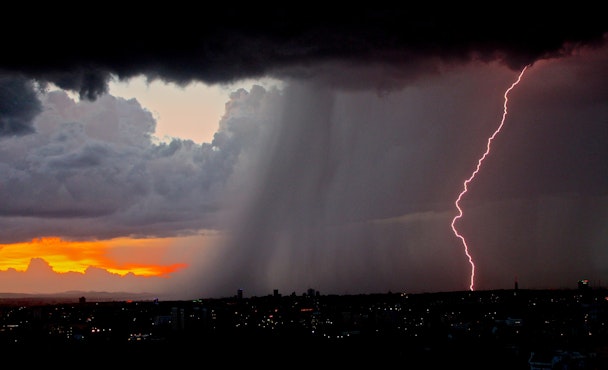Why creative teams need to be ‘cultural meteorologists’
Consumer tastes change quickly – sort of like the weather. That’s why creative teams must act like meteorologists, says VMLY&R executive creative director Craig Elimeliah. Everything agencies do now must predicated on culture, which can be analyzed and forecasted to a degree, but will always be somewhat unpredictable. Here’s what you can do to stay ahead of the storm clouds.

Creatives should always be prepared for a potential storm ahead
You have been trying to organize a picnic with your friends for months. You’ve carefully curated your outfit, your wine selection, your earth-friendly utensils, your CBD candles, a hashtag for the day and your conversation topics.
Everything is packed inside that cute picnic basket you found on TikTok, SPF 15 is on and you look Instagram-ready, only to realize that it is cloudy, drizzly and more rain is a-comin’. Suddenly you start to get a flurry of texts suggesting that maybe we reschedule...
WTF happened?! The weather people had one job, and they failed at it! Before you decide to curse up a storm on social media, remember that weather people are just data scientists who are trying their best to make an accurate prediction based on the data they have handy. It’s called data modeling, and as advertisers we use it to make hundreds of thousands of predictions every single day.
You’re probably asking yourself, ‘Why is this guy talking about the weather in a thought piece about advertising?’ Culture is like the weather: fickle, surprising, and ever-changing. And as advertisers, we need to be more like weather people.
In today’s advertising landscape, think of your broader creative team as cultural meteorologists. It’s up to us navigate culture that can shift as quickly (and dramatically) as the weather. In order to communicate and engage with consumers, we need to be able to forecast what the hour, day, week, month or year will look like.
There are now millions of channels, billions of touch points and trillions of voices echoing everywhere around the world. The average person is presented with a new message every 1/2 a second and those messages are all competing to align with whatever the pervasive culture is at the moment.
The people who are the faces of the weather report have teams that are typically responsible for analyzing meteorological data from a variety of sources to prepare and issue forecast products, advisories and warnings concerning a number of hazardous weather conditions.
Sound familiar?
Those teams also have meteorologists who collect data; provide weather advice and guidance to other federal, state and local agencies; conduct research; and develop methods for integrating new science and technology into the forecast process.
Familiar again?
All so we can plan that picnic with our friends in the park more accurately.
We as creative teams (creatives, strategists, data analysts, connections, account and production) must also start to act like weather people. Everything we do is now predicated on culture, which we can analyze and forecast to a degree, but will always be somewhat unpredictable.
So how do we get ahead of culture? How do we start to predict, react and respond to it? How do get a grasp on what the conditions will be for any given day so that we may be best prepared with what we should be putting out there for our clients?
Data is our way of trying to describe and predict something in theoretical terms that exists in real terms, which means that whatever we try and predict is always going to be inherently flawed.
We only have a set number of variables made available to us to react to in the speed in which we need to ideate and create our content and then, even if we can keep up with that blinding pace, our ability to measure will always have an element of error. That is just the nature of our environment, and we all know that small errors can have big consequences.
Burger King recently had to apologize and delete a tweet that said ‘women belong in the kitchen’ on International Women’s Day. It had caused a 12-hour tornado that many think resulted in their famous chief marketing officer being forced to step aside.
On that day, the conditions simply didn’t allow for this type of message to resonate. It was like trying to have a picnic in a hurricane.
It kept getting worse and worse until it finally came to a head, and Burger King’s attempt to put more women in positions of culinary leadership and create a scholarship program for them was completely rained out.
Culture is data in real-time.
We creative people have to seek out and get the data we need. It must be analyzed and interpreted many times and very quickly before we are able to do anything with it, and by the time we create and launch something we must also realize that the work is likely to be slightly out of date or the result of bad human interpretation.
We must be more like meteorologists; to be better not only at predicting culture, but also at knowing how and when we must adapt and understand when it could ruin our plans if not interpreted correctly.
So, the next time the sun is hidden behind some clouds or you wake up to 12 inches of snow piled up outside your door in April, remember that the weather is something that is not entirely in our control and that we as creatives should always be prepared to encounter unexpected conditions. As John Ruskin once said: “There is no such thing as bad weather, only different kinds of good weather.”
Craig Elimeliah is executive creative director at VMLY&R.
